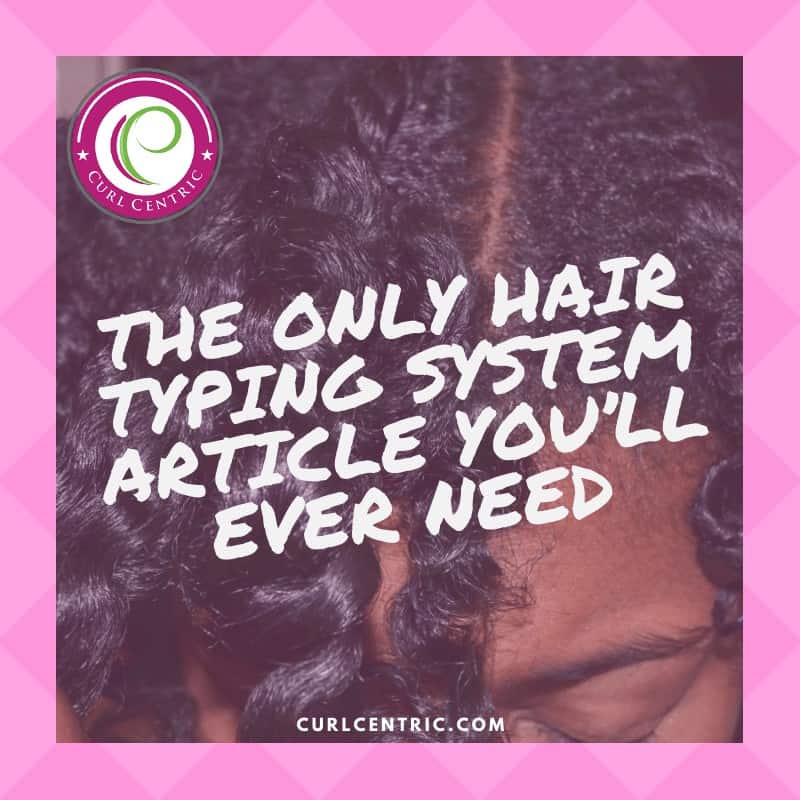
What’s your hair type? Are you a 3b or 4A hair type? Maybe – that is if you decide to use one well-known hair typing system. Your hair type could also be an “OS” or an “IS” according to a different hair type chart (or system).
We’re asked very often about hair typing systems. More specifically – many naturals are interested in how to determine their hair type.
Generally speaking – we don’t discuss hair typing very often because there are many things that each person must do to care for their hair regardless of their individual hair type.
Having said that, we do recognize that there are some differences associated with caring for certain types of hair. Furthermore, many women utilize hair typing systems to describe the way their hair looks.
I think it’s important to be clear about a few things before we begin discussing hair types. There are multiple hair typing systems – including the Andre Walker Hair Typing System, LOIS, and FIA’s Hair Typing System.
We don’t endorse or recommend any particular hair typing system. However, we recognize that the system created by Andre Walker is substantially more popular well-known, and communicated than the other hair typing systems.
Note: This doesn’t imply that Andre Walker’s system is necessarily the best or most accurate.
During this guide, I will discuss very specific details associated with the most popular hair typing systems – beginning with Andre Walker, then LOIS, and finally FIA.
Disclaimer: It’s very easy to incorrectly determine your hair type if you only look at the pictorial representations that have been provided. Please don’t rule out a particular hair type simply because your hair doesn’t look like the pictures below.
Table of Contents
- 1 Andre Walker Hair Typing System
- 2 Type 1: Straight Hair
- 3 Type 2: Wavy Hair
- 4 Type 3: Curly Hair
- 5 Type 4: Kinky Hair
- 6 What’s Missing? Now, Let’s Discuss Hair Type 3C, Type 4C, and 4D
- 7 LOIS Hair Typing System (often spelled as L.O.I.S Hair Typing System)
- 8 Hair Patterns
- 9 Hair Strand Sizes
- 10 Hair Textures
- 11 How to Find Your LOIS Hair Type
- 12 The NaturallyCurly Hair Typing System
- 13 Type 2: Wavy Hair
- 14 Type 3: Curly Hair
- 15 Type 4: Coily Hair
- 16 Fia’s Hair Typing System
- 16.1 Who Created the Hair Typing System?
- 16.2 Is Hair Typing Real?
- 16.3 Is Hair Typing Necessary?
- 16.4 What Is the LOIS Hair Typing System?
- 16.5 What Are the 4 Types of Hair?
- 16.6 How Do You Determine Your Hair Type?
- 16.7 What Are the 12 Major Hair Types?
- 16.8 Is My Hair 1C or 2A?
- 16.9 What Is Type B vs Type C Hair?
- 16.10 Do I Have 1B Hair?
- 16.11 Related Articles
- 17 Emerging Hair Typing Systems
Andre Walker Hair Typing System

Andre Walker is famously known for creating a hair typing system or infamously known depending on your perspective. Andre reveals his hair typing system in a book titled Andre Talks Hair!
Andre makes it very clear in his book that everyone has good hair regardless of ethnicity.
He was hoping to immediately debunk the often ridiculous good hair vs. bad hair debate prior to diving into a discussion about hair typing.
Unfortunately, many people believe that Andre’s Hair Typing System is hierarchical and intentionally places kinky hair in the bottom (“worst”) category.
Andre has made statements over the years that have offended many Type 4 women – including the following comment:
Andre Walker on Type 4 hair: "I always recommend embracing your natural texture. Kinky hair can have limited styling options; that’s the only hair type that I suggest altering with professional relaxing".
Type 4 hair types include the most common hair types found in black hair.
That statement started a tremendous amount of buzz on the internet. He later issued a statement to clarify his initial comments immediately following the Elle article on his personal website.
Regardless of his original intentions, his comments definitely offended many women.
Even if you have a negative opinion of Andre Walker, I encourage you to read the book yourself and develop your own opinion of his hair typing system in Andre Talks Hair!
Andre’s system isn’t communicated accurately on many popular blogs that have written articles about the system. Having said that, let’s discuss the hair types defined in Andre Talks Hair!
Type 1: Straight Hair

Type 1 Straight Hair: Generally speaking, Type 1 hair is straight; however, Andre categorizes this hair type into three very specific segments – Type 1A, Type 1B, and Type 1C.
- Type 1A hair is described as fine, very thin, and soft with a noticeable shine.
- Type 1B hair is medium-textured and has more body than Type 1A hair.
- Type 1C hair is the most resistant to curly styling and relatively coarse compared to other Type 1 hair types.
Related Articles:
Type 2: Wavy Hair
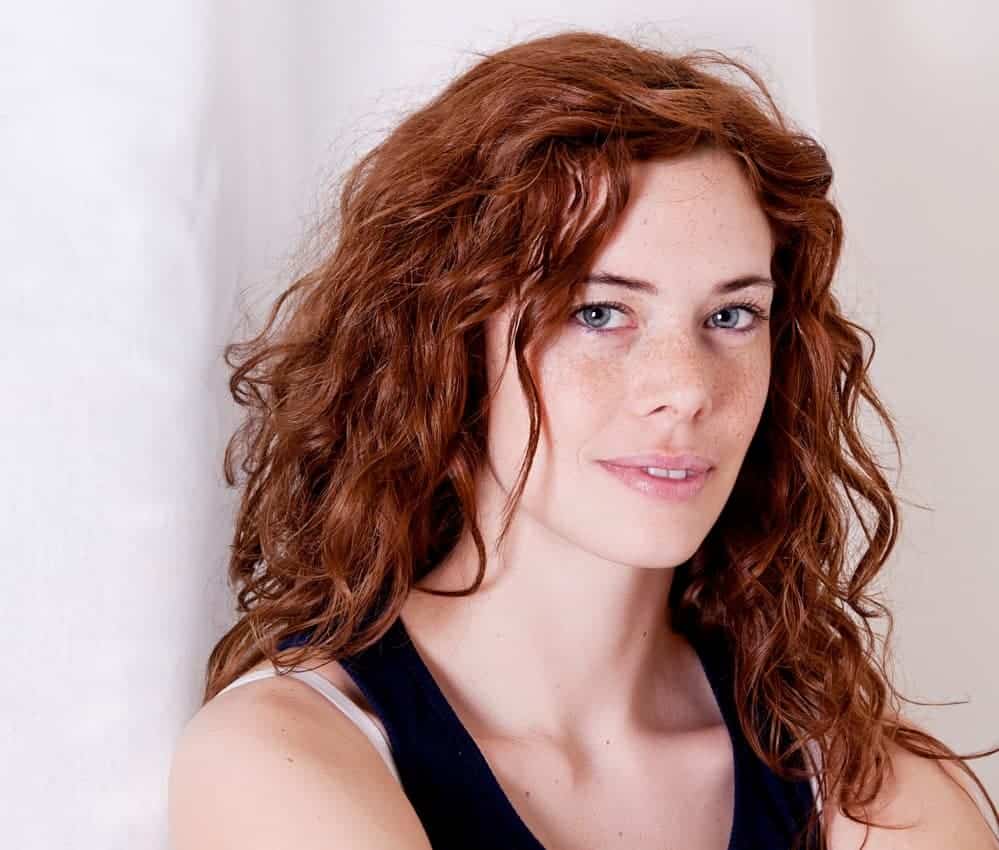
Type 2 Wavy Hair: Type 2 is wavy hair that usually isn’t overly oily or very dry. The thought is that Type 2 hair falls right in the middle of Type 1 and Type 3.
- Type 2A hair is fine and thin. It is relatively easy to handle from a styling perspective because it can easily be straightened or curled.
- Type 2B hair characteristically has natural waves that tend to adhere to the shape of your head.
- Type 2C hair will frizz easily, and it is fairly coarse.
Related Articles:
Type 3: Curly Hair

Type 3 Curly Hair: Curly hair textures have a definite “S” shaped curl pattern. Since the cuticle doesn’t lay flat, you will notice that curly hair isn’t nearly as shiny as Type 1 (straight hair) or Type 2 (wavy hair) hair types.
- Type 3A hair is very shiny and loose.
- Type 3B hair has a medium amount of curls, ranging from bouncy ringlets (spiral-like loose curls of hair) to tight corkscrews (spiral-shaped corkscrew curls).
- Type 3C hair isn’t a part of the Andre Walker Hair Typing System. Please see the “what’s missing” section below for more information.
Related Articles:
Type 4: Kinky Hair
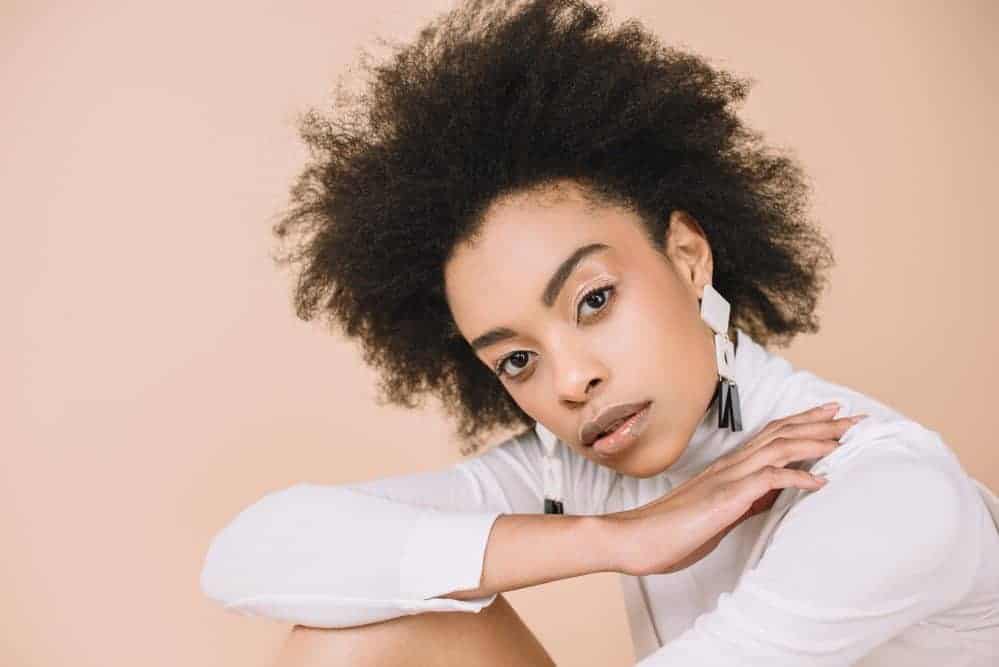
Type 4 Kinky Hair: Type 4 is “kinky” or, more appropriately, full of tight coils (tightly curled hair). Typically, Type 4 hair is also extremely wiry and fragile.
Oftentimes, it appears to be coarse. However, it is really very fine, with several thin hair strands densely packed together.
Note that type 4 hair is one of the most common hair types found in black hair (African American hair).
- Type 4A hair is full of tight coils. It has an “S” pattern when stretched, much like Type 3 curly hair.
- Type 4B hair has a less defined pattern of curls and looks more like a “Z” as the hair bends with very sharp angles.
- Type 4C hair isn’t a part of the Andre Walker Hair Typing System. Please see the “what’s missing” section below for more information.
- Type 4D hair is an emerging classification. It isn't a part of the original Andre Walker Hair Typing System, although it's become quite popular on social media and hair care forums. More details are available in the "what's missing" section below.
Related Articles:
What’s Missing? Now, Let’s Discuss Hair Type 3C, Type 4C, and 4D
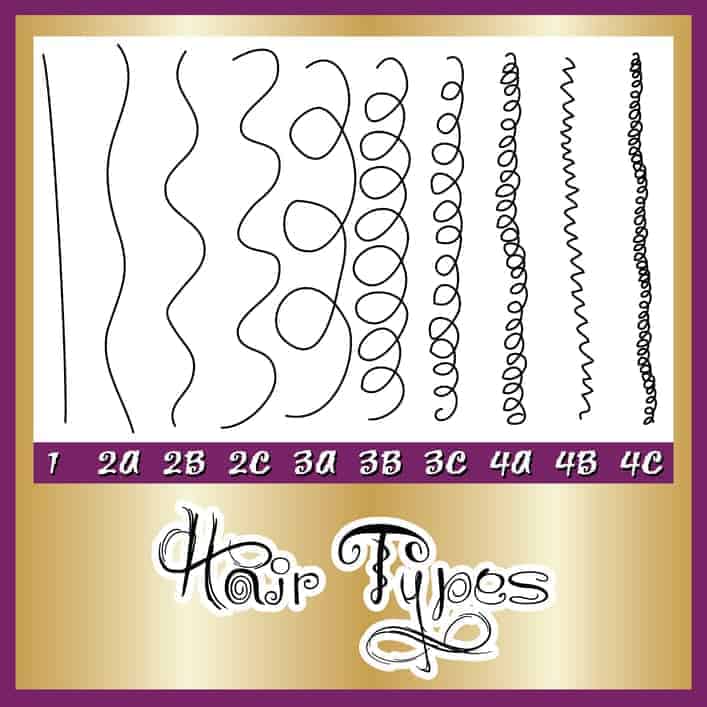
You’ll notice that Type 3C, Type 4C, and 4D hair types aren’t mentioned in the discussion above, that’s because they were not included in the original Andre Walker system.
Type 3C was created after Andre Walker released his hair typing system by a community member at NaturallyCurly.com.
The prevailing thought was that the original hair typing system left this hair type out. Consequently, Type 3C hair has been defined as tight curls or coils that look like corkscrews.
Type 4C, like Type 3C, isn’t an actual hair type, according to Andre Walker’s Hair System.
His comments are actually very simple regarding Type 4 (Kinky) hair – if you can see a definite curl pattern, then you have Type 4A hair. If you can’t identify a defined, specific curl pattern, then your hair type is 4B.
I would imagine that the Type 4C hair type was created by a member within the natural hair community – just like the Type 3C hair type.
Similarly, the 4D hair type was created within the natural hair community. It's very popular on social media and hair care forums. It's usually described as a more tightly coiled "extension" of the 4C hair type.
LOIS Hair Typing System (often spelled as L.O.I.S Hair Typing System)

The LOIS Hair Typing system appears to be dying a slow death, although there are many naturals that advocate for it over the more well-known Andre Walker Hair Typing System.
LOIS was created by a website that is no longer active. Hair typing is considered by many to be very user-friendly – due to its simplicity.
The LOIS hair typing system defines hair using three characteristics: (1) pattern, (2) strand size, and (3) texture.
Hair Patterns
The LOIS system defines the hair pattern by the letters LOIS. I’ll explain:
- L = If your hair is dominated by right angles and substantially bends with nearly no curve, then you’re considered a pattern “L”.
- O = If your hair strand curls or coils significantly and appear to be shaped like the letter “O”, then you’re considered a pattern “O”.
- I = If your hair has no distinctive curls or bends and primarily lies flat against your head, then you’re considered a pattern “I”.
- S = If your hair strand has “S” shaped curls or gorgeous waves with defined hills and valleys, then you’re considered a pattern “S”.
Finally, it’s important to note that you may have several different LOIS hair patterns on your head. When this occurs, the system allows you to combine LOIS letters to determine your hair pattern.
For example, your hair pattern may be an “OS” LOIS hair type. In this example, your hair would contain primarily a combination of “O” shaped spiral curls and “S” shaped curly waves with defined hills and valleys.
Hair Strand Sizes
Identifying your hair strand within the LOIS system starts with using a strand of frayed thread. One piece of a frayed thread (like a piece of sewing thread) is used as a proxy to determine the size of your hair strand.
The general thought (according to the LOIS hair typing system) is that a piece of thread is approximately the size of a medium-sized strand of hair.
- Smaller than a piece of sewing thread = Thin, fine hair strands
- Size of a piece of sewing thread = Medium hair strands
- Larger than a piece of sewing thread = Think hair strands
Hair Textures
- Thready – This thready hair texture has a low sheen and a bright shine when the hair is stretched. This hair texture should have low frizz and get wet easily. Even though this hair texture wets easily, the water will dry out very quickly.
- Wiry – This hair texture has a sparkly glossy appearance with very little shine and low frizz. When the wiry hair texture is wet, the water will bead up or bounce off the hair strands. This hair texture is more difficult to get fully wet.
- Cottony – The cottony hair texture has a low sheen and bright shine when the hair is stretched and is usually highly frizzy. The cottony texture absorbs water very quickly; however, it doesn’t get completely wet very fast.
- Spongy – The spongy hair texture absorbs water (like a sponge) and has a high sheen and low shine.
- Silky – The silky texture has a low sheen and a bright high shine. The level of expected frizz with this hair texture can vary substantially. Silky hair becomes completely wet very easily.
How to Find Your LOIS Hair Type
Examine a few of the most common types of hair on your head. If you have multiple hair types within the LOIS system, then you should begin by examining the most common hair type on your head.
Prior to examining your hair, be sure that it has been recently washed (rinsed in cold water) and doesn’t have any hair products applied to it.
Another option is to wash a strand of hair that has been removed from the scalp and rinse it in cold water. Allow the individual hair strand to dry without touching it to get an accurate depiction of the LOIS hair type.
The NaturallyCurly Hair Typing System

One new hair typing system that has grown in popularity amongst women with curly hair types is a modified version of the Andre Walker system recommended by TextureMedia, which owns the brands and web properties of NaturallyCurly and CurlyNikki.
According to NatuallyCurly, your hair type is the key to determining the right products and hairstyles for your hair. This hair typing system focuses on three types of hair: Wavy, Curly, and Coily.
The NaturallyCurly system further classifies the three aforementioned categories into sub-classes: A to C.
These subclassifications, which are based on the diameter of the hair's wave, curl, or coil, are borrowed directly from the original Andre Walker hair typing system.
As per usual, the goal of this hair typing system is to clear up the confusion so women can embrace their naturally curly hair and find the best hair products for their hair.
The reality is that many women don't fit perfectly into one category and subclassification. It's common to have a combination of hair types (or different types of curls) on your head.
Type 2: Wavy Hair
Type 2 hair has a wavy texture. It's not quite straight, yet it's not fully curly. It's a spectrum that ranges from thick, S-shaped waves mixed with curls to loose loops.
The type 2 texture tends to be flatter around the root, which makes it lay close to the head. It gets curlier from around the ears down.

Type 2A: Your waves have a tousled, loose hair texture. Due to the lack of definition and volume, hair products can easily weigh down your strands. If you want to maintain your curls, then use lighter hair products such as gels and mousses.

Type 2B: Your hair is straight at the roots, at least for the most part, and has S-shaped waves that have more definition from the mid-length down to the ends. The texture is medium and has a bit of frizz at the crown. If you want more definition as a 2B hair type, plop your hair when it's freshly washed.

Type 2C: Your waves are much more defined and start all the way at the roots with ringlets and curls. The texture is generally coarse or thick, which has a habit of frizzing. Diffuse your hair while it's wet, although your hair should not be soaking wet if you want more volume.
Type 3: Curly Hair
Type 3 hair ranges from tight, curly tendrils to light curls. It generally has a combination of different textures. Type 3 hair types are also defined as springy curls. They have more volume as well as height at the roots than type 2 hair types, which are wavy.

Type 3A: Your curls are big and loose. If you've ever seen sidewalk chalk, then you have a good gauge for the circumference of Type 3A curls.
They tend to be shiny as well and are S-shaped. If you want more curl definition, try to twirl tiny sections of curls around your finger when your hair is damp.
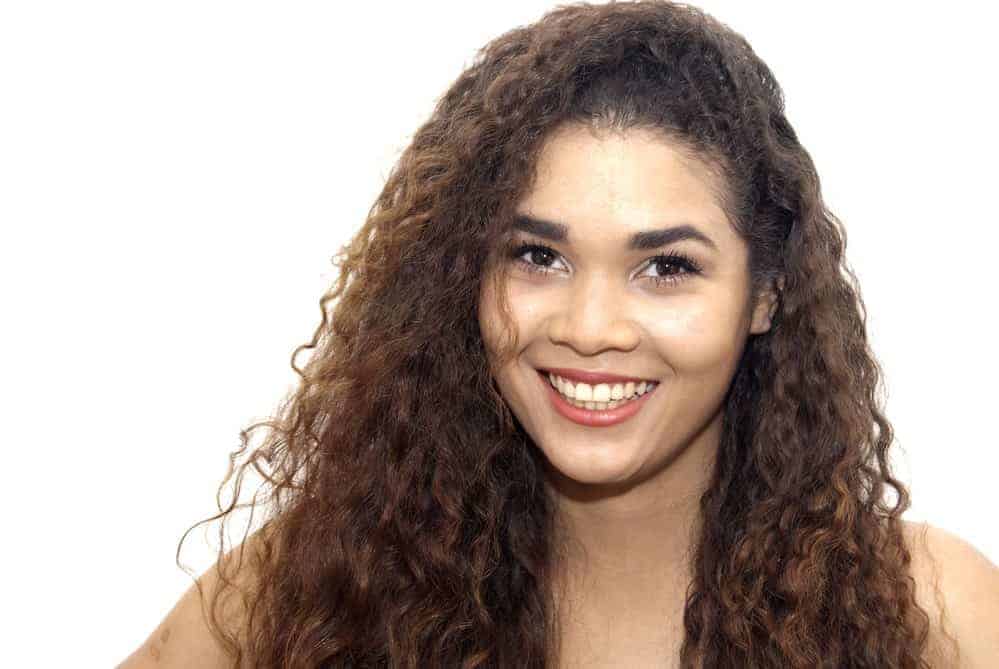
Type 3B: Your curls are springy, and you can find variants anywhere from corkscrews to ringlets. Your curls are also voluminous.
Where 3A hair types have curls that are approximately the circumference of sidewalk chalk, 3B hair types are comparable to a permanent marker.
3B hair is generally dense. Use humidity-blocking styling products. You might want to use styling milk if you want more definition but less frizz.
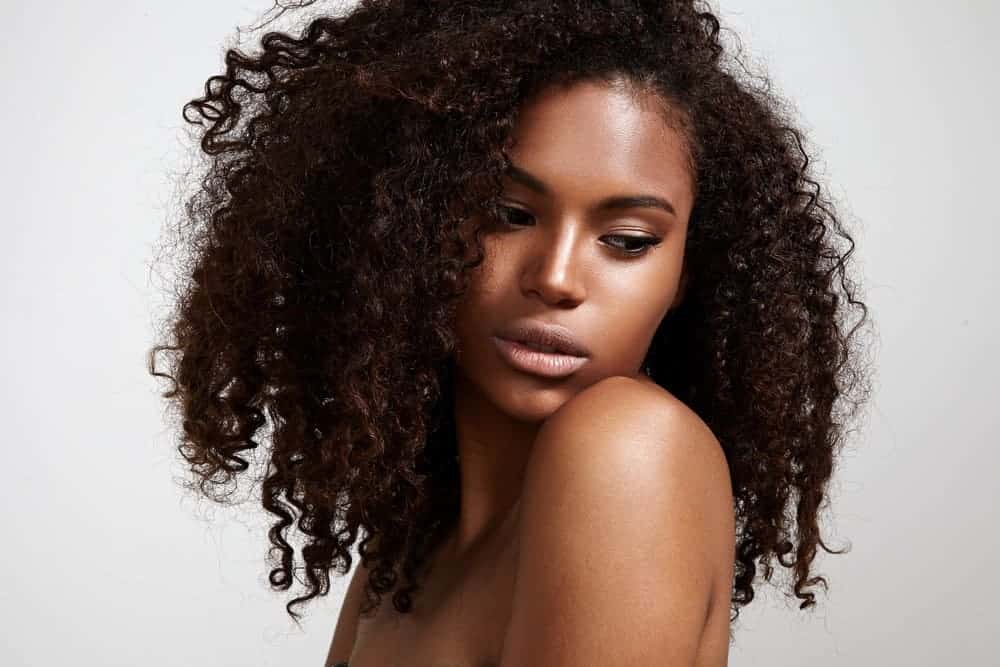
Type 3C: This is sometimes called "curly-coily" hair due to its density. It's made up of tightly packed corkscrew-like curls that tend to be as big around as a pencil.
3C tends to have the highest amount of volume, but also tends to have the most shrinkage. Stretch and enhance gently without heat with a flexi-rod set, twist-out, or a set of perm rods.
Type 4: Coily Hair
Coily hair is thin and fine, or wiry and coarse, and has coils that are densely packed. People often think coily hair is robust, but that is not the case!
It's the most fragile texture due to having the fewest cuticle layers protecting it from dryness. The top hair concerns with type 4 hair are avoiding tangles, maintaining moisture, and fighting off shrinkage.

Type 4A: Your coils are either fine or wiry with the circumference of a crochet needle. They're still dense and springy with a notable S pattern.
Use natural emollients with a thicker consistency, such as shea butter, to get the most out of your twist-outs or wash-and-go styles after you wash.

Type 4B: Instead of coiling or curling, you have hair that bends in sharp angles. They look quite a bit like the letter Z. The curl is tighter and far less defined, having the circumference of an ink pen.
The strands range from wiry and coarse to fine and thin. Pre-poo using coconut oil to retain your scalp's natural chemistry.

Type 4C: You have hair as densely packed as 4B, just with less definition as well as more shrinkage. The hair texture, which is tightly coiled like all Type 4s, ranges from super fine and soft to coarse and wiry. It's incredibly delicate hair. Try using a humectant with a creamy consistency as a leave-in product.
Fia’s Hair Typing System

There is one other hair typing system that had a consistent following several years ago. Actually, there are still several women on some natural hair forums that are advocates for Fia’s Hair Typing System.
Fia’s Hair Typing System appears to expand on Andre Walker’s Hair Typing System and incorporate components of the LOIS Hair Typing System also.
The system defines hair using three classifiers: (1) the definition of your curls (think Andre Walker), (2) the appearance of most of your hair strands, and (3) the overall volume of your hair.
First Classifier: The first classifier, which defines your natural hair type by determining the curliness of your hair strands (or the lack thereof – if that’s the case), is analogous to the Andre Walker system utilizing Type 1 – straight hair, Type 2 – wavy hair, Type 3 – curly hair and Type 4 – really curly hair.
Second Classifier: The second classifier focuses on the appearance of the majority of your hair strands. Actually, this classifier is very similar to the hair strand sizes used within the LOIS system, but there are some minor differences in terminology.
- F – Fine: Fine, thin hair strands that feel almost like an ultra-fine strand of silk.
- M – Medium: Medium-sized hair strands, which generally feel like rolling a cotton thread between your thumb and index fingers, are ones that simply fall in between the fine and coarse categories according to Fia’s Hair Typing System.
- C – Coarse: Think of hair strands that feel hard and wiry.
Third Classifier: The third classification of Fia’s Hair Typing System measures the overall volume of your hair. Simply place your hair in a ponytail.
Include as much hair as possible in the ponytail. There is no need to worry too much about how your hair looks because the goal is to have the majority of your hair included in the ponytail.
Once you have the majority of your hair in a ponytail, the next step is to measure the circumference of the ponytail.
You can use a soft tape measure or another method that won’t damage your hair to measure the circumference of your ponytail.
Simply wrap the soft tape measure around your ponytail below the elastic (ex. Goody Ouchless Hair Elastics) used to hold the ponytail together.
The number shown on the soft tape measure is used to determine whether your hair fits into the thin, normal, or thick, according to Fia’s Hair Typing System.
- Thin – The circumference of the ponytail is less than 2 inches (less than 5 centimeters)
- Normal – The circumference of the ponytail is between 2 – 4 inches (between 5-10 centimeters)
- Thick – The circumference of the ponytail is greater than 4 inches (greater than 10 centimeters)
Note: The circumference is simply the measured distance around a circle or edge of an object that is roughly circular.
Who Created the Hair Typing System?
The exact origin of the hair typing system is uncertain, but it was most likely created by the African American hair care industry as a way to categorize different textures of hair. Andre Walker is a celebrity hairstylist who is credited with popularizing the hair typing system and classifying hair into four specific types.
Is Hair Typing Real?
Hair typing is a real and widely used system in the hair care industry. It is used as a tool to categorize and describe the different textures and types of hair, such as straight, wavy, curly, and coily. However, hair typing is not scientific or exact, and some people have criticized the system for promoting hair texture stereotypes.
Is Hair Typing Necessary?
While not necessary, many people find hair typing extremely helpful for understanding their hair texture and choosing hair care products. It's a tool used in the industry to categorize hair textures. Some view it as limiting and choose not to use it, while others find it useful. The choice to use hair typing is personal and depends on individual preferences.
What Is the LOIS Hair Typing System?
The LOIS hair typing system categorizes hair based on the shape, size, and texture of a single strand. This system eliminates the need for labeling hair types by numbers. Strands are labeled as L (bendy with minimal or no curvature), O (curled into a zero or multiple spirals), I (flat and straight), or S (wavy with hills and valleys).
What Are the 4 Types of Hair?
The four main hair types are: 1) Straight (Type 1), 2) Wavy (Type 2), 3) Curly (Type 3), and 4) Coily (Type 4).
How Do You Determine Your Hair Type?
To determine your hair type, wash it and let it air-dry without adding any products. Next, compare your hair's natural pattern and texture to hair typing charts or descriptions. This comparison will help you identify its type and subtype.
What Are the 12 Major Hair Types?
The 12 major hair types, derived from the main four types, are: 1A, 1B, 1C (straight); 2A, 2B, 2C (wavy); 3A, 3B, 3C (curly); and 4A, 4B, 4C (coily).
Is My Hair 1C or 2A?
1C hair is the coarsest and most textured form of straight hair. It remains straight but has more texture than straight hair types like 1A. For instance, 1A is pin-straight from root to tip and lacks body or volume. On the other hand, Type 2 hair is naturally wavy. If your hair is entirely straight with some texture but without waves, it's more likely 1C. If your hair exhibits a wavy pattern, then it's likely 2A.
What Is Type B vs Type C Hair?
Type B and Type C are subcategories within the main hair types (e.g., 1B or 3C). Type B hair has a more defined wave or curl pattern than Type A. Type C hair has the strongest wave or curl pattern in its category.
Do I Have 1B Hair?
1B hair is part of the "straight" hair category. It's characterized as being straight with some volume and bounce. It usually lies flat against the head at the roots and may have a bit of texture, especially towards the ends. You likely have 1B hair strands if your hair matches this description.
Emerging Hair Typing Systems
There are other emerging curl-type systems, but honestly, most of the new ones aren’t well known.
If these emerging systems achieve an adequate social following, then I will update this article to include a complete discussion of those hair typing systems.
At the moment, any hair typing system that doesn’t have a legitimate following within the curly community (or natural hair community) is considered outside of the scope of this guide.
Lately, many hair product manufacturers have been creating proprietary hair typing systems in order to sell more hair products to individuals looking for personalization in their natural hair regimen.
That said, several manufacturers have created product guides based on the very well-known Andre Walker Hair Typing System to recommend their products on a personalized basis.




